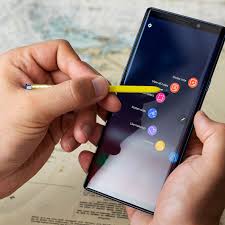
Breaking News
We Americans Need to Dig Deep into Historical Perspective
 A timeless clip of Michael Burry explaining how he used credit default swaps...
A timeless clip of Michael Burry explaining how he used credit default swaps...
 The next financial crisis won't start in a bank lobby. It's already brewing in the market
The next financial crisis won't start in a bank lobby. It's already brewing in the market
Top Tech News
 This tiny dev board is packed with features for ambitious makers
This tiny dev board is packed with features for ambitious makers
 Scientists Discover Gel to Regrow Tooth Enamel
Scientists Discover Gel to Regrow Tooth Enamel
 Vitamin C and Dandelion Root Killing Cancer Cells -- as Former CDC Director Calls for COVID-19...
Vitamin C and Dandelion Root Killing Cancer Cells -- as Former CDC Director Calls for COVID-19...
 Galactic Brain: US firm plans space-based data centers, power grid to challenge China
Galactic Brain: US firm plans space-based data centers, power grid to challenge China
 A microbial cleanup for glyphosate just earned a patent. Here's why that matters
A microbial cleanup for glyphosate just earned a patent. Here's why that matters
 Japan Breaks Internet Speed Record with 5 Million Times Faster Data Transfer
Japan Breaks Internet Speed Record with 5 Million Times Faster Data Transfer
 Advanced Propulsion Resources Part 1 of 2
Advanced Propulsion Resources Part 1 of 2
 PulsarFusion a forward-thinking UK aerospace company, is pushing the boundaries of space travel...
PulsarFusion a forward-thinking UK aerospace company, is pushing the boundaries of space travel...
 Dinky little laser box throws big-screen entertainment from inches away
Dinky little laser box throws big-screen entertainment from inches away
 'World's first' sodium-ion flashlight shines bright even at -40 ºF
'World's first' sodium-ion flashlight shines bright even at -40 ºF
Supercapacitors power the Note 9 stylus -- but are they ready to replace batteries?

Samsung's latest Galaxy Note 9 has a nifty new feature: for the first time, the S Pen stylushas Bluetooth and can be charged instantly using a supercapacitor. Sticking the S Pen into the phone for 40 seconds gives it enough juice for 30 minutes of use, so battery life should no longer be a worry. But how exactly does this technology work? And what else could we use supercapacitors for?
Supercapacitors (or ultracapacitors) store energy and, in some ways, are the opposite of batteries. Batteries can hold a decent amount of energy but take a long time to charge, explains Thomas Miller, a materials scientist with the Electrochemical Innovation Lab at University College London. Supercapacitors charge so fast it seems instantaneous, taking just seconds or minutes versus hours. But they hold only a tiny amount of energy. Imagine getting shocked by static electricity — it happens very fast, but there's only a little bit of shock.

 The AI money machine!
The AI money machine!

